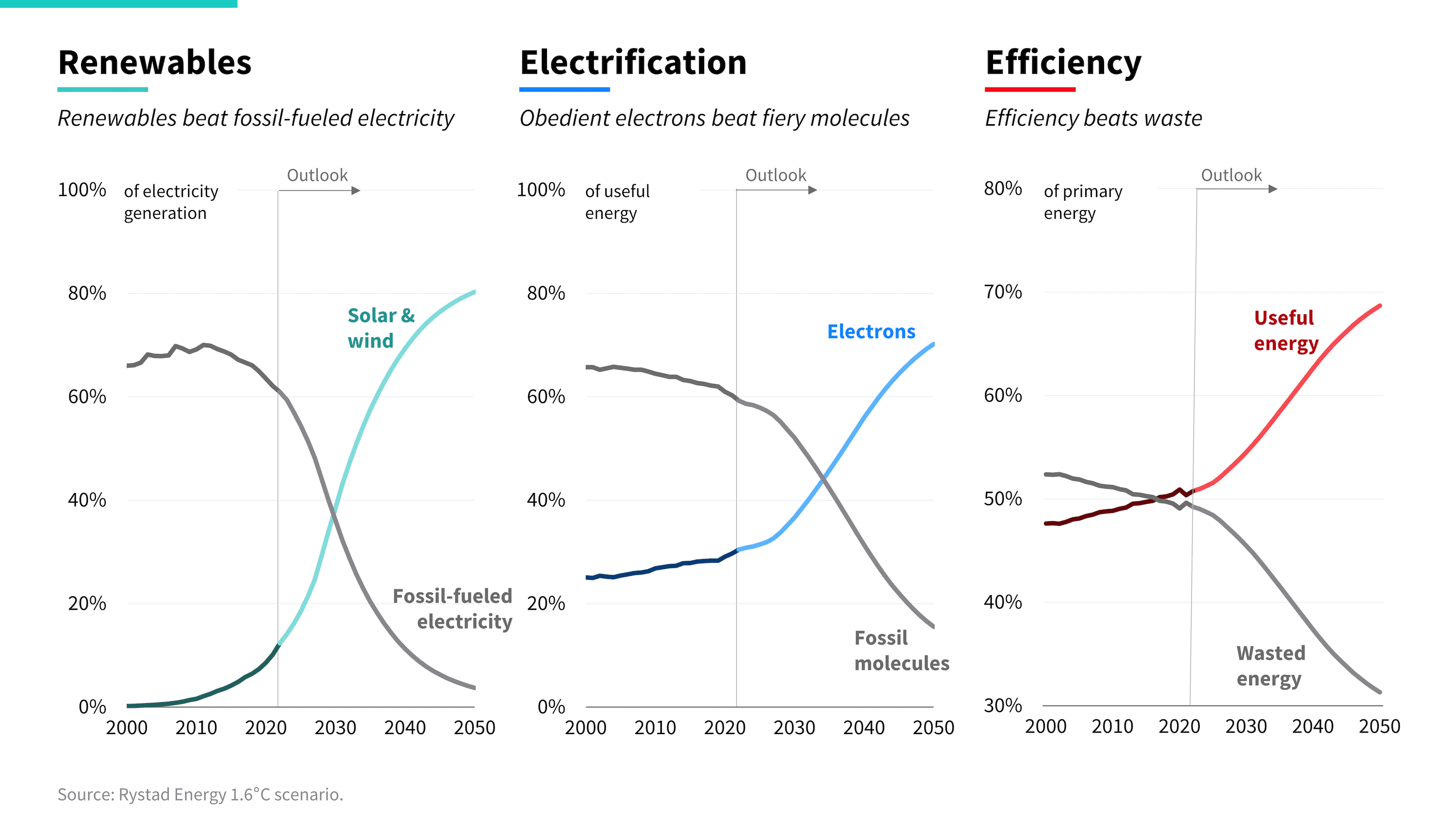The Energy Transition in Three Xs
Solar and wind take over electricity; electricity takes over energy; efficiency reduces wasted energy.

Spark Chart | July 29, 2024
As new clean technologies grow up S-curves, the incumbent technologies get pushed out in inverse S-curves. This creates an X pattern that is standard in technology history; we saw this for example in the shift from cast iron to steel and from horses to cars.
The energy transition can be summarized in three Xs: renewables, electrification, and efficiency.
- Solar and wind push out fossil-fueled electricity. Solar and wind are the new superior energy sources: they are cheap and getting cheaper, available everywhere, and captured locally. They eliminate combustion and pollution from electricity generation. They are rapidly taking over electricity supply. In 2000, solar and wind produced just 0.2 percent of global electricity. By 2010, this figure had increased to 2 percent, and by 2023, it had reached 13 percent. By 2030, they will be producing over a third of global electricity generation.
- Obedient electrons push out fiery molecules. Electricity is the newly dominant energy carrier, transcending the inefficiencies and pollution resulting from setting fossil molecules on fire. Over the past century, electricity has quietly risen to become the largest supplier of useful energy. According to Rystad Energy, in 1965 electricity accounted for 10 percent of useful energy, rising to 30 percent in 2022. This century-long trend is about to accelerate as renewables make electricity cleaner, cheaper, more secure, and more efficient. By 2050, electricity is likely to supply around 70 percent of useful energy.
- Efficiency pushes out waste. The efficiency of the energy system is set to structurally rise in the decades ahead, enabling more wealth creation per unit of energy. Old fossil energy is incredibly inefficient: about two-thirds of primary energy goes up in smoke as it is converted to useful purposes. But renewable electrification removes combustion from the energy chain, meaning we lose much less energy to unused heat. Further considering design and digitalization can give us more energy services from far less primary energy. And greater efficiency means the supply-side takeover of renewables and electricity happens even faster.
This chart is taken from The Cleantech Revolution. See the full report here.